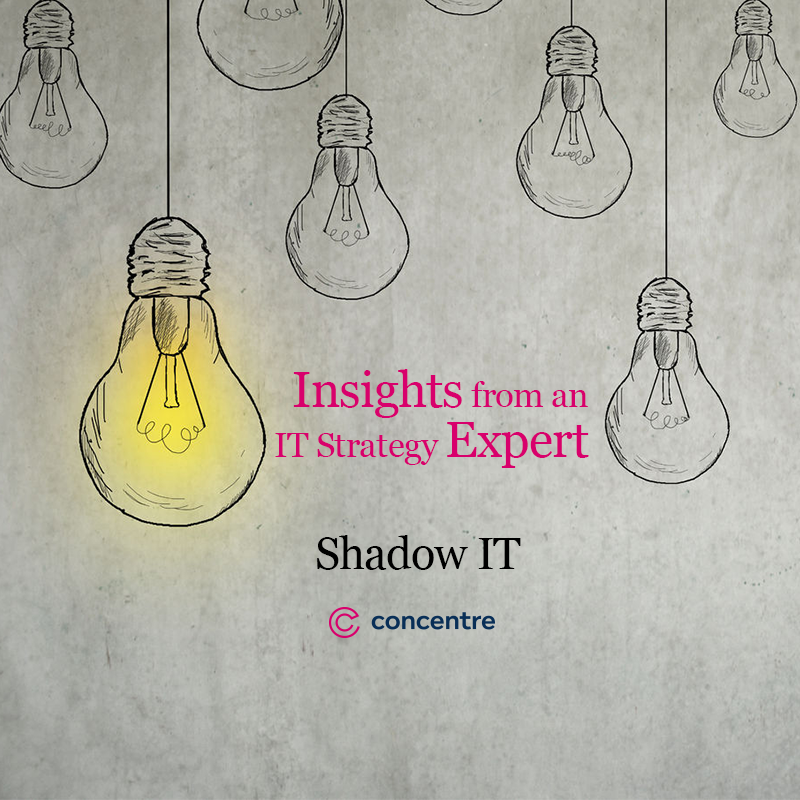
In 2016, businesses are racing towards digital and technological transformation. They are growing internal IT budgets and/or departments, restructuring their entire strategy and IT planning, and launching digital projects and platforms in search of improved ROI. Throughout these transformations, many things can happen to the business and its strategy.
When changes within IT organizations turn into a global trend, the employees here at Concentre get a bit…nerdy. We read the reports and gather every bit of information to fully analyze and assess the situation. Our experience lends us the wisdom to answer those questions every CEO, CIO, and IT manager has running through their head when they hear the news:
- Why are departments moving forward with projects without company approval?
- Are there risks involved with unauthorized projects?
- What should I do if I discover unauthorized projects within my organization?
We centre ourselves in what is happening and provide insight on why these trends occur, and more importantly, how to react to them within an organization. It’s what we do – it’s our passion.
The Functionality of Shadow IT
For corporate technology functions “Shadow IT” is typically viewed as a challenge. “Shadow IT” (or “Stealth IT”) is usually used to describe and classify technology systems and solutions that are being built, deployed and used within a company’s organization without approval from the technology team.
The use of “Shadow IT” has grown over the last few years. Specifically, the advent of Cloud and SaaS solutions has made it much easier for non-technologists to buy and use solutions without the involvement of the technology function. Indeed, in many cases, it is faster to get started without involving the company’s technology team.
As an example, a recent report from Cisco, in January 2016, found that Shadow IT in enterprises had increased by 70% in the previous six months. The Cisco report also highlighted that while CIOs estimate that their companies use an average of 91 cloud services, the true number averages over 1,100. In addition, a recent report from NTT Communications in March 2016 found that over 80% of respondents believed that Shadow IT is likely to increase in the next two years.
This increase in Shadow IT is often regarded as a risk in corporate technology functions. This can especially be the case where applications and services that require integration with the rest of the technology portfolio have been purchased (e.g. customer data, workflow). And, it can also lead to cost overruns and missed dates when those who understand technology negotiations are not included in them.
How should a CIO respond?
- Understand that Shadow IT is feedback from your business customer/partner. It needs to be heard.
- Partner with your business customers to better understand their needs and to work together on how technology can provide solutions.
- Determine which technology innovation functions can better be taken on in the business. Using tools to prototype, pilot or test what reporting is needed or how the workflow should operate can improve requirements and the time to deliver.
- Provide incentives to work in a connected way between the business and technology function.
Shadow IT is often viewed as a challenge or risk, but it does not have to be. It can be a source of innovation and way of better aligning on the purpose and plan.



